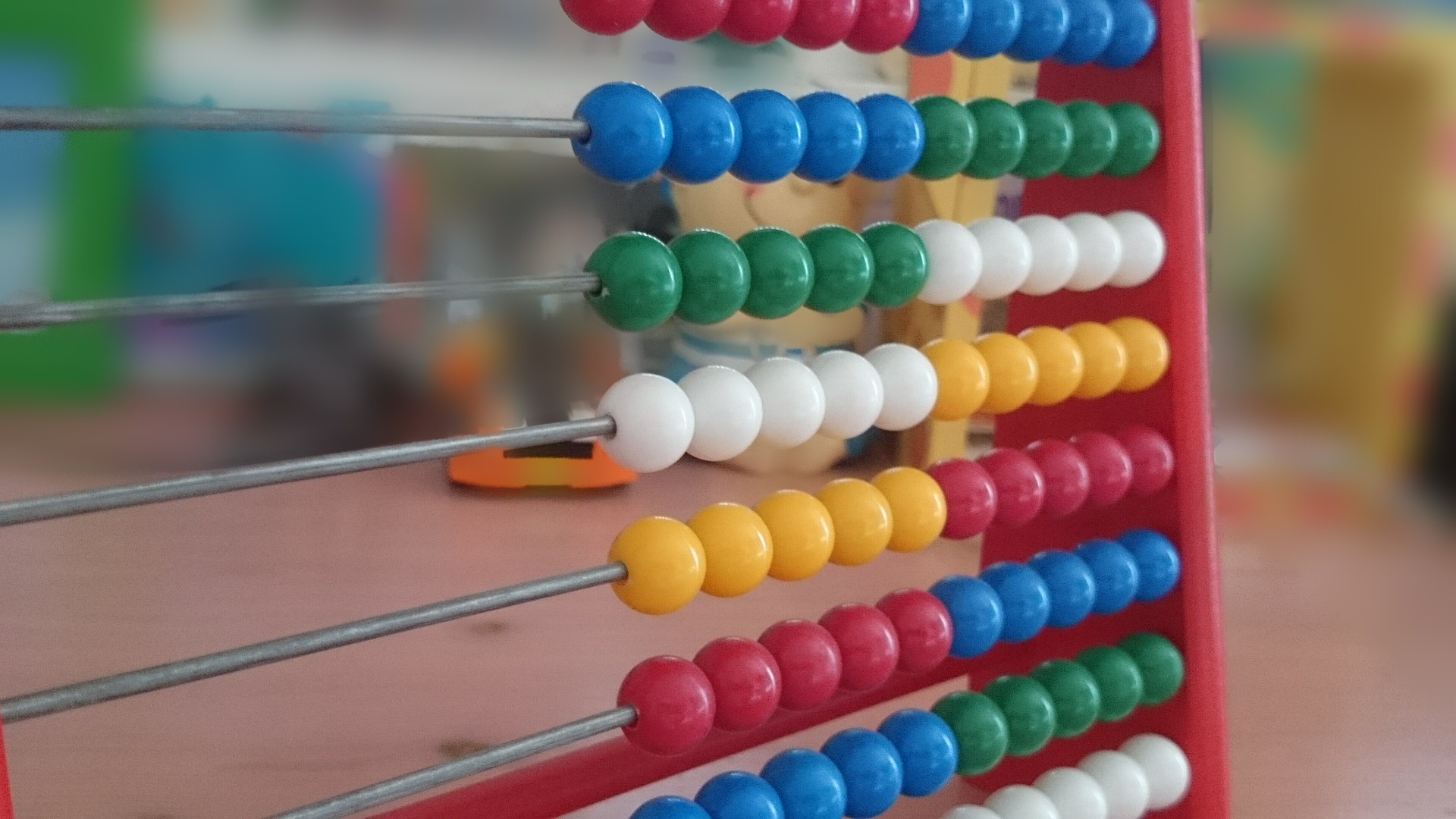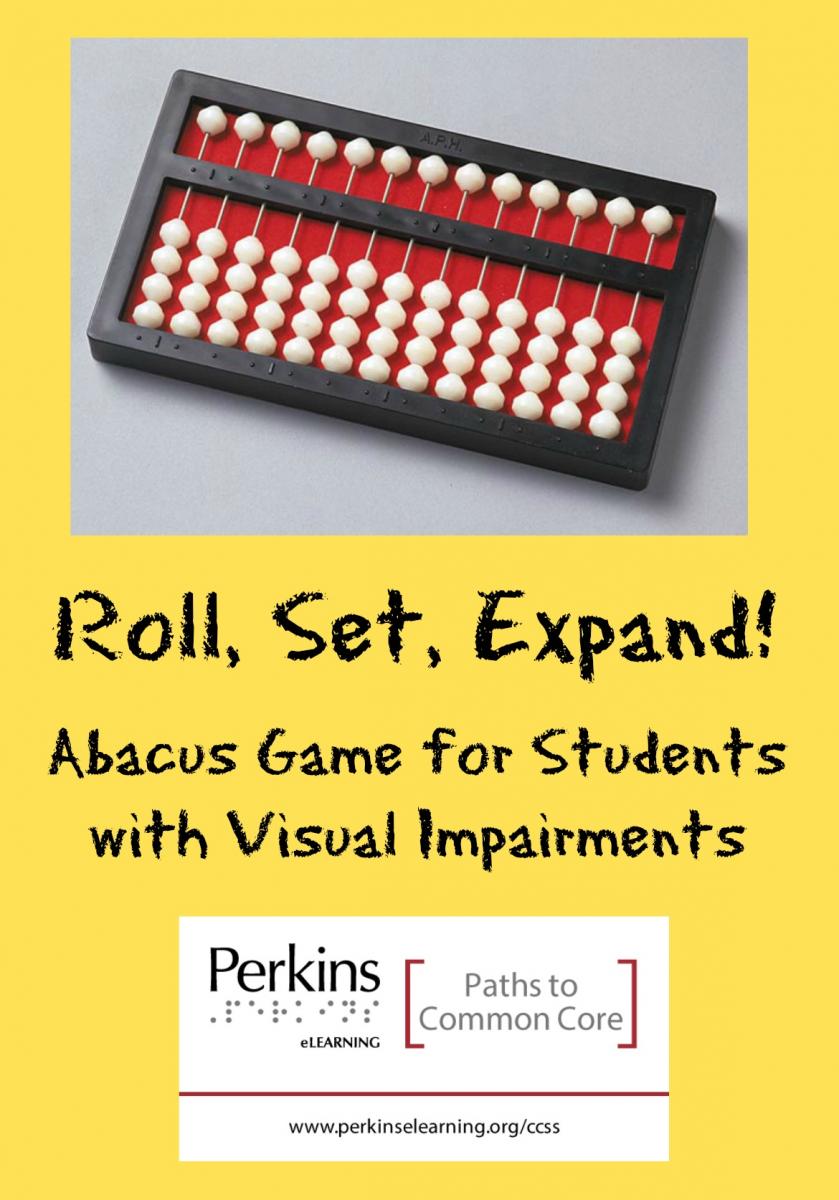Roll, Set, Expand!
Submitted by mere0705 on Apr 14, 2015

This lesson was designed to be a fun approach to using the abacus for place value understanding and properties of operations to add and subtract.
This activity will also help students develop:
- Knowledge of place value (tens and one’s place)
-
Use of the abacus for direct/indirect addition and subtraction
- Familiarity with tactile dice
Materials:
- Abacus
- Tactile dice (2 per player)
- Base 10 set: ten rods, unit cubes
Procedure:
- Each student rolls one dice at a time and sets that number in the tens place on the abacus.
- Next the student rolls the second dice and sets that number in the ones place on the abacus.
- Once the two-digit number is set on the abacus, students are asked to use manipulatives (unit cubes, ten rods) to represent their two-digit number.
- After each student has correctly displayed their number they can compare numbers. The student with the largest number wins that round.
Extension: Students can practice addition/subtraction skills on the abacus by rolling one dice again and adding/subtracting that number to the original number set on the abacus.
Variations:
- Use a piece of felt on the abacus to cover columns not being used (thousands place and higher)
- Use a sorting tray to separate ten rods and unit cubes
- If the game is being played with sighted peers they can use paper/pencil to record their numbers
Domain Math:
Number & Operations in Base Ten
Math Standard:
- 1.NBT.B.2a - Understand place value. - Understand that the two digits of a two-digit number represent amounts of tens and ones. Understand the following as a special case: 10 can be thought of as a bundle of ten ones — called a “ten.”
- 1.NBT.B.2b - Understand place value. - Understand that the two digits of a two-digit number represent amounts of tens and ones. Understand the following as a special case: The numbers from 11 to 19 are composed of a ten and one, two, three, four, fiv...
- 1.NBT.B.2c - Understand place value. - Understand that the two digits of a two-digit number represent amounts of tens and ones. Understand the following as a special case: The numbers 10, 20, 30, 40, 50, 60, 70, 80, 90 refer to one, two, three, four, ...
- 1.NBT.C.4 - Use place value understanding and properties of operations to add and subtract. - Add within 100, including adding a two-digit number and a one-digit number, and adding a two-digit number and a multiple of 10, using concrete models or draw...

